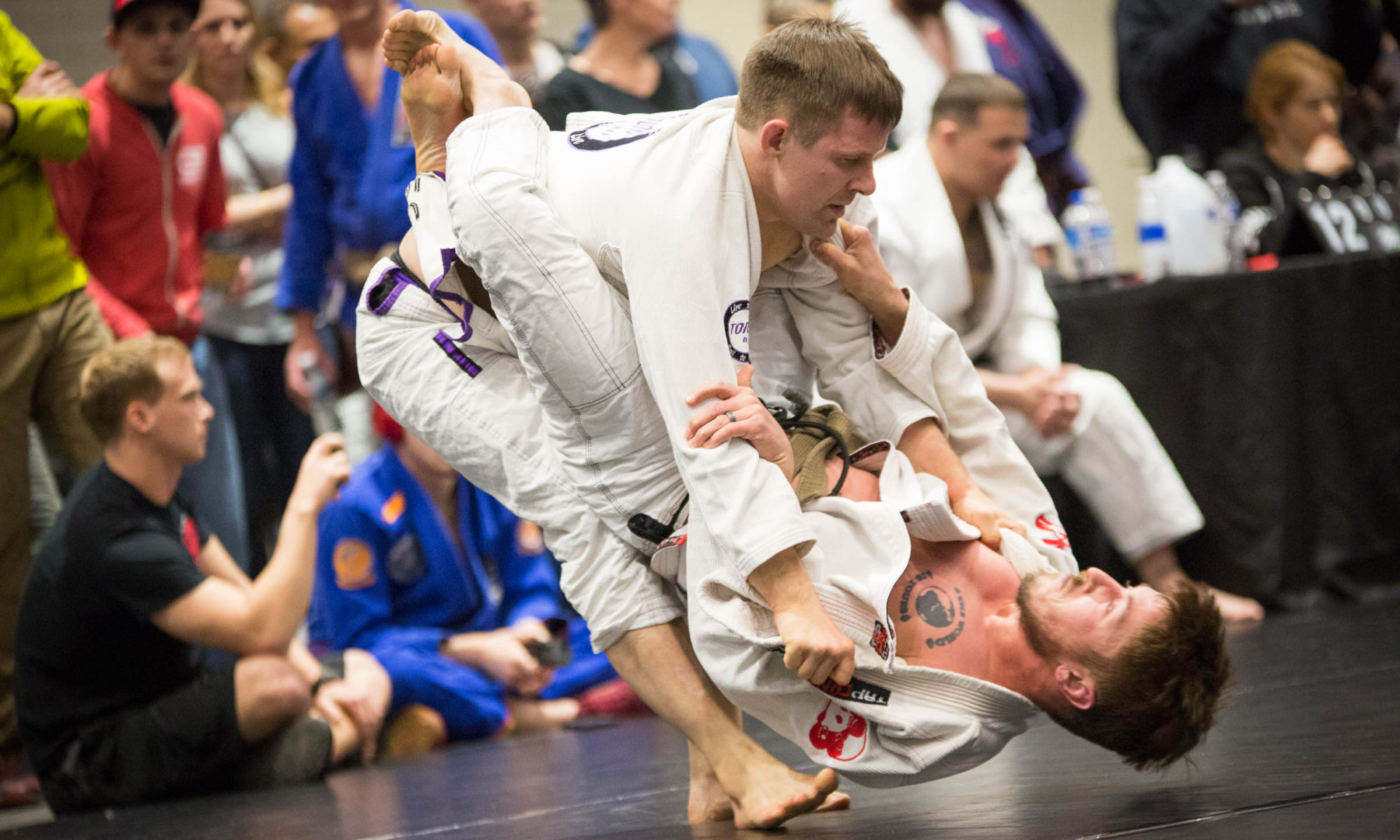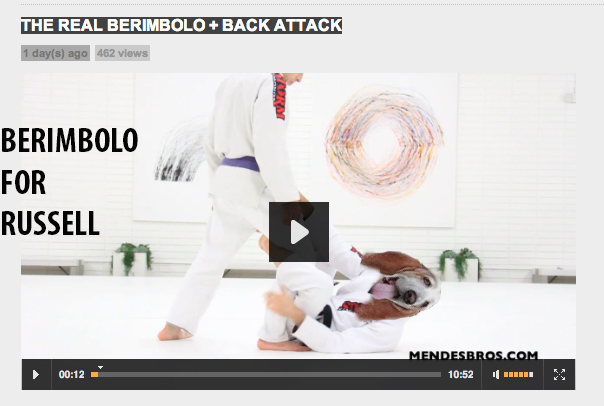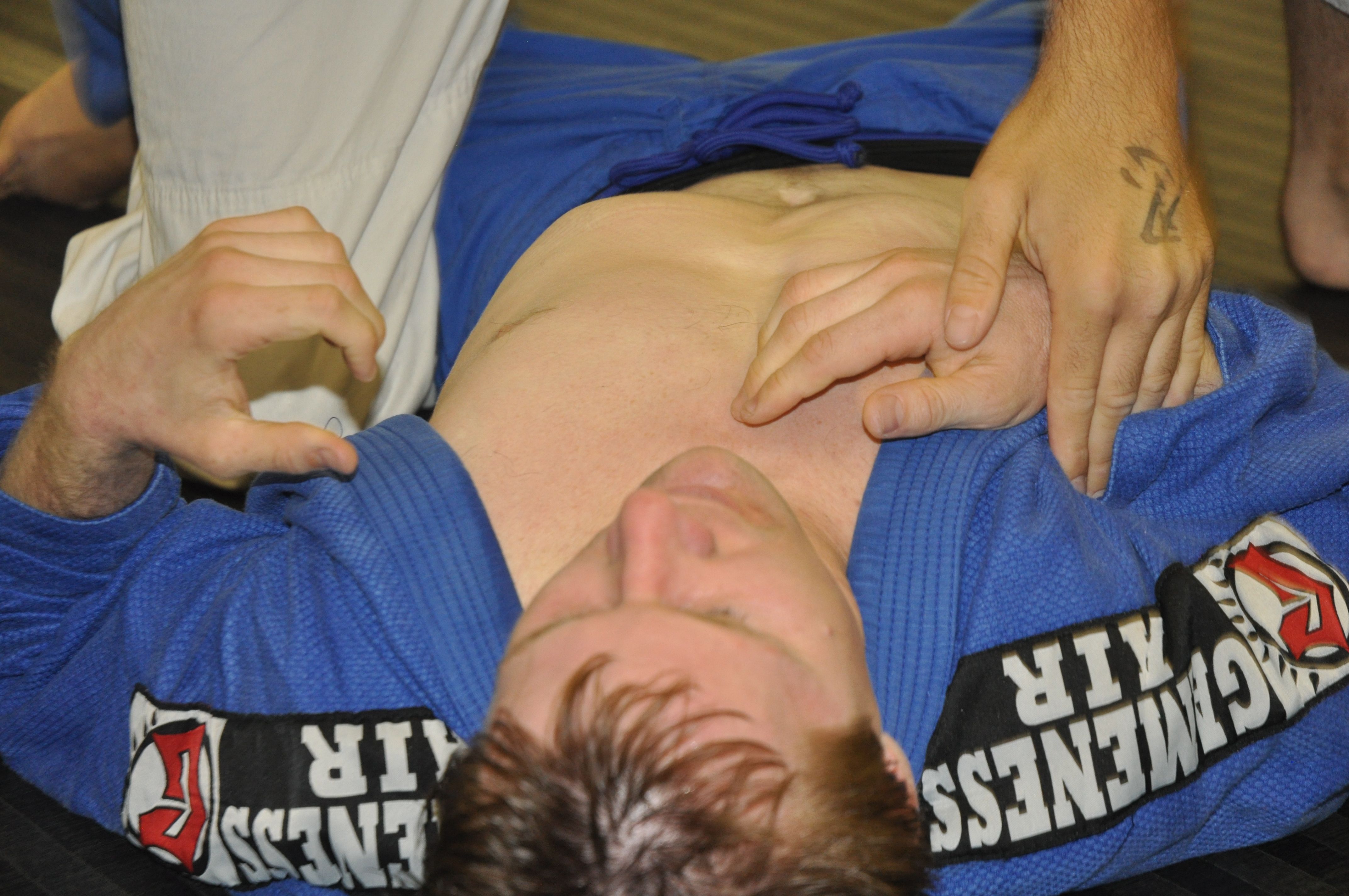If you’re reading this, you probably love a grappler, are a grappler, or both. To you, whatever your station, we say: thanks for the love, but what we really want is presents.
In all seriousness, I sometimes hear those who have grapplers in their lives complain that it’s a struggle to shop for a BJJ player, judoka or wrestler. It’s tough to separate the good gifts from the bad, because it’s tough to navigate the arcane world of Brazilian Jiu-Jitsu for those who don’t train. I’m sympathetic. My girlfriend likes to knit, and if I tried to buy her some yarn I’m sure I’d get the pursed-lip “at least he tried” smile.
Nobody wants to get effort points for gifts. We want to get great stuff for the people we love!
What follows is a guide of 10 types of item you might consider getting your grappler, complete with suggestions of quality stuff and ideas for how to tease out information about what they want. If you don’t want to end up buying your grappler a TapouT hoodie or George Dillman’s advanced pressure points for grapplers (and believe me, you don’t), read on!
I’ve put this together in a truly altruistic manner, with no expectation of anyone getting me any of these. Ahem.
***
1. Instructional DVDs: This is probably the safest option. I’m a voracious consumer of DVDs, and it’s always exciting to see high-level people teaching you how to do their techniques. Some of my recent favorites are Caio Terra’s Modern Jiu-Jitsu and Ryan Hall’s new Arm Triangles set. Next on my list: Lucas Lepri’s guard passing. Actually, maybe I should get Ryan Hall’s triangles set so I can stop getting triangled in tournaments.
For ease of gift-buying, just check the DVD shelf and you can tell what your grappler has — and what s/he needs next.
Related:
2. Membership to An Online Site: These days a lot of amazing instructors have membership-driven websites where they post video instruction. This is a great option that allows your grappler to learn with only an Internet connection, and without the hassle of using Handbrake to rip their DVDs. Marcelo Garcia has perhaps the most comprehensive site, and is highly recommended: the great Rafael Lovato Jr. has a new guard passing website that looks outstanding.And I’m just about to re-up my subscription to the Mendes Brothers site. Unless, you know, anybody wants to hook me up for Christmas …
Also, it’s simple to see what your grappler subscribes to: just click those links and see if s/he is logged in at those sites.
3. A Private Lesson: This is a little trickier to figure out, but believe me, it would be worth the effort. I’ll bet your grappler has a dream “to train with” list. Why not pay for a private lesson with that person? It’ll be easy to drag out of them: just ask them “If you could train with anyone, who would it be?” Then listen to them drone on about jiu-jitsu for 20 minutes without stopping. You know they’re going to do so anyway, so you might as well get information out of it.
It doesn’t have to be a big name instructor to be a great gift, though. Privates are a really effective way for your grappler to work on what they want to work on, with personalized attention from their instructor or another great local person. I’ve been very lucky to get private lessons from terrific local brown and black belts, and every time, I get that incremental improvement that puts a spring in a grappler’s step. Or guard. Or something.
Anyway, if your grappler’s dream private instructor lives too far away, get them talking about who the best local instructors are. Then contact one of those and pay ’em in advance for a private. A gift certificate for a private with a local instructor would make my eyes light up, and I’m sure the same is true of your grappler.
4. A Great Gi: Warning: the degree of difficulty might be high on this one. For many grapplers, the gi is of great personal importance. After all, we spend hundreds of hours in these things. Personal tastes vary widely on style and fit of a gi — all A1s and A2s are not created equal. I can wear anywhere from A1 to a small A3 myself. Hence, it’s best if your grappler has already been babbling about this awesome gi they’d love to have.
If they haven’t, here are some ideas for multiple categories:
Budget: The Cageside Genesis is $85, and is seriously the most comfortable gi I own. It’s my everyday training gi, and if you’re looking for a utilitarian model with a classic clean white aesthetic, look no further.
Classy: I love my Moya White Sand gi. It’s the right blend of distinctive and understated, in my view. You can’t mistake it for anything else but it isn’t going to burn out anybody’s retinas, either.
Flashy: Scramble’s The Wave looks classic on the outside, but the internal rashguard is a piece of art. High-end, but beautiful.
Designed Specifically For Female Grapplers: My training partner loves her Fenom gis. They look great and they’re both soft and durable. Affordable, too. For a flashier model that supports a good cause, the Shoyoroll Her Honor just came out today and supports breast cancer research.
Future: Tell ’em you’ll buy a Green Gi when those come out. Then take them out for some hempseed tempeh.
Remember, be sure to check the size chart, or better yet call the manufacturer to make sure the size you buy will fit.
5. Grappling Gear: I just talked about how fashion choices can be personal, but people also love to represent their sport and their gym. Does your grappler need a hoodie? How about a shirt? Cageside MMA has great selection and the best prices around along with awesome customer service. I get 90% of my stuff there, and I’ve never been disappointed. If they need training gear like gloves or rashguards or fight shorts, you can get those at Cageside, too.
But my favorite thing I’ve bought this past year is the black gi backpack. It’s simple, functional, looks great, and — unlike many gear bags — I can take it to other places without standing out. Plus, BJJ folks can always use a new bag. Gym sandals are always good, and can be inexpensive. Or how about a belt rank keychain as a stocking stuffer?
Also, I have to say that I love my Scramble grappling tights. I get made fun of for them sometimes, but I’ve had my sense of shame surgically removed, so it works out. Plus, mat burns suck, and this helps you avoid them. If your grappler is an exhibitionist or fan of Shinya Aoki, you could always get ’em the rainbow spats, too.
6. Soap. No, I am not a fancy lad or a member of the Flopping Dandies BJJ fight team. (In fact, an ex of mine once ended things by telling me “I want to make you more of a metrosexual.” True story.) Just because I don’t spend a lot of time in Lush, though, doesn’t mean I want to smell like my car gi all the time. I’ve used Athletic Body Care and liked it, although the scent had to grow on me a little. A friend of mine swears by Super Body Care, too. Get your grappler some of this stuff, bar or body wash, and don’t worry about your grappler being nicknamed “Malcheiroso.”
Of course, you might set yourself up for the offended “Are you getting me this because you think I’m smelly?” face. You’re on you’re own navigating that one: I’m just handling the commerce here.
7. Entry to a Tournament: Grappling tournaments are fun, exciting, productive for learning, and memorable. They are also expensive. If your grappler likes to compete, surprise him or her with an entry to a tournament. I’ll bet there is a US Grappling tournament near you. Depending on your location, travel situation and your grappler’s interest level, you could also get them an entry to an IBJJF tournament.
They’ll either weep with joy or give you the mortified “what have you gotten me into?” look. The former is satisfying: the latter is priceless.
8. Grappling Artwork: One of my friends and training partners got me a very cool John Smalls print, and it’s now in a place of prominence in my living room. I also really like Seymour Yang, known more commonly as Meerkatsu. If you’re not totally stoked on your grappler hanging their autographed white belt up for decoration (and yeah, I’m guilty of that), be proactive and get some wall-hangage of your own.
9. GrAPPling: Sorry, I reached for that one.
If your grappler has a smartphone, there are some terrific apps out now. Dave Camarillo has a good iPhone app that’s composed primarily of video. Felipe Costa has a free BJJ referee app that will help the competitors out there (as well as some paid technique apps as well). If you’re intrigued by Caio Terra’s Modern Jiu-Jitsu, those apps are available now too.
Maybe buy an app as a stocking stuffer, or download a bunch and then sync them as a Christmas morning surprise.
10. Donate to a great charity in their name. Yeah, this isn’t grappling-specific, but charities can always use a boost, and you can tell your grappler that his/her karmic power will be amplified nine-thousand-fold by the gesture.
Besides, there are some BJJ-related charities that do great work, like the George Pendergrass Foundation and Tap Cancer Out, both of whom raise money for cancer research. If you donate to Pendergrass, maybe you could even work a deal with Guy and Rob for a private or two in exchange. Double your pleasure! That was not intended to be a “twin” joke, but it just worked out that way.
There you have it: 10 ideas to get you started on gifts for your grappler. Thanks for reading — and I hope your grappler thanks you as well. Got other ideas? Feel free to leave them in the comments.










